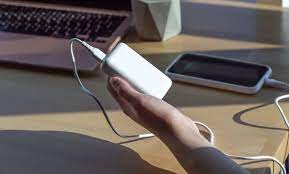Things You Should Know About LCD Displays in General:
We can find LCD screens everywhere these days. At home and at work, you probably have at least one thing with an LCDs screen. This includes your TV, computer screen, watches, clocks, smartphones, and even calculators. If you are looking for LCD panel manufacturers, you are at the right place.
But have you ever wondered how your LCD screen works, how long it will last, what parts it has, and how it compares to other new display technologies?
When you know all of these things about your LCD screen, you can enjoy it even more. When you know these things, it’s easier to take care of your device.
Here are the most important things you should know about LCDs displays.
How do LCD Work:
We can use Liquid Crystal Display technology in LCD screens. Liquid crystals can move, but we arrange their molecules in a way that makes them look like solid crystals.
The image that flashes across an LCD screen is made of liquid crystals. But they don’t give off light. These crystals are lit up with backlights. We offer custom LCDs as we are a custom LCD manufacturer.
The lifespan of an LCD Display:
How long an LCD screen lasts depends on a number of things, such as:
- The source of the LCD screen’s backlight
- Size of the screen and how it’s stored
- The status of the electrical parts that go with the LCD screen
- How often do you use it
- The setting of how the screen works (is it used indoors or outdoors)
Most LCD monitors can work for between 30,000 and 60,000 hours. That’s the same as using the screen 24 hours a day for 5–7 years. It could also mean 10–20 years if the monitor was on for 8 hours every day, 5 days a week.
The biggest factor in how long an LCD display will last is how long the backlight will last. Because liquid crystals don’t make light on their own. The backlight is what lets the light shine through the liquid crystals. So, the LCD screen wears out when the backlights get dim, which happens when it has lived as long as it can.
How to Take Care of LCDs and Make them Last Longer:
How Should an LCD Screen Be Kept:
4 Ways to Cut Down on Capacitive Touch Screen Display Problems After the Sale
Parts of an LCD screen:
An LCD display screen is made up of several parts. Here, we’ll talk about each one:
1. Backlight:
The backlight is what makes the whole LCD display device bright. Without a backlight, the LCD device is hard to use because it is dark. Backlights are put right behind the LCD panel to make the screen brighter.
LCD screens on simple devices like pocket calculators don’t have a backlight. The numbers on these calculators can only be seen in natural light. But most modern LCD screens, like TVs, computer monitors, smartphones, screen panels used in aeroplanes, outdoor signs, and medical monitoring devices, get their light from the back.
LCDs have a few different kinds of backlights, and here are some of them:
- Light Emitting Diode (LED):
This type of backlight is the most common and common way for LCDs to get light today. Light-emitting diodes are made of semiconductors that give off light when electricity flows through them. Electrons and holes are the things that carry electric current. When these combine with electrons in a semiconductor, photons are released (light particles).
- Electroluminescence Panel (ELP)
Electroluminescent materials like colour phosphors are used to make light instead of heat. This material is put between two layers of conductors. A flow of electricity through the material causes it to give off light. Most of the time, ELPs are found on small LCD screens.
- Fluorescent lamps with a cold cathode (CCFL)
A cold cathode fluorescent lamp is the main source of light in a CCFL backlight. This lamp has a cathode that isn’t heated by an electric filament, so the word “cold” is used to describe it. In front of the CCFL lamp is a diffuser, which spreads the light evenly across the whole screen.
2. The Liquid Crystal for an LCD Screen
We usually make the heart of an LCD screen of liquid crystals. This strange substance moves like a liquid but has many of the same properties as crystals. One thing that these liquids must do is attract each other. Also, the molecules in the liquid crystal must have different directions. This means that the molecules of the liquid crystal have that average structure along an axis of molecules.
There are three basic ways that liquid crystals move:
- The Nematics of Liquid Crystals:
In the nematic phase, the molecules of the crystals can move around freely in the liquid. But these molecules only point in one direction, which makes them different from molecules of pure liquid. Most LCD screens use a liquid made of nematic liquid crystals.
- Smectic Of Liquid Crystals:
In the smectic phase, the liquid crystals stay in the same place and face the same way. But now, the molecules are lining up to make layers. The smectic layers make it hard for the liquid crystals to move, making them act like solids.
3. Liquid Crystals with Colour Filters:
In the space between the liquid crystals, you can find colour filters. When we turn on the pixel, these filters control whether the colour is red, green, or blue. The filters work by controlling the red, green, and blue parts of each pixel on their own. This means that the LCD screen can show all of the colours that we can find in the colour space.
4. Filters that Make Liquid Crystals Polarising:
Two polarising filters make up an LCD cell. The other one is just in front of the pixel in front of it and is vertical.
Polarizing filters decide which patterns of light can get through the LCD screen. If these filters aren’t there, the LCD panel’s images won’t have enough contrast and will be of lower quality.
5. Transistors with a Thin Film (TFT):
TFTs are tiny electrical parts that we etched onto polarising glass substrates. LCD screens often have transistors made of amorphous silicon.
The voltage that powers the LCD display comes from the TFTs. Each pixel on a screen has its own transistor, which makes it easy to control all of the pixels at once by changing the electrical current.
Conclusion:
That’s all you need to know to get started with LCD display screens. Now you know how an LCD screen works, how long it could last, what parts it has, and how it compares to other types of screens.













































